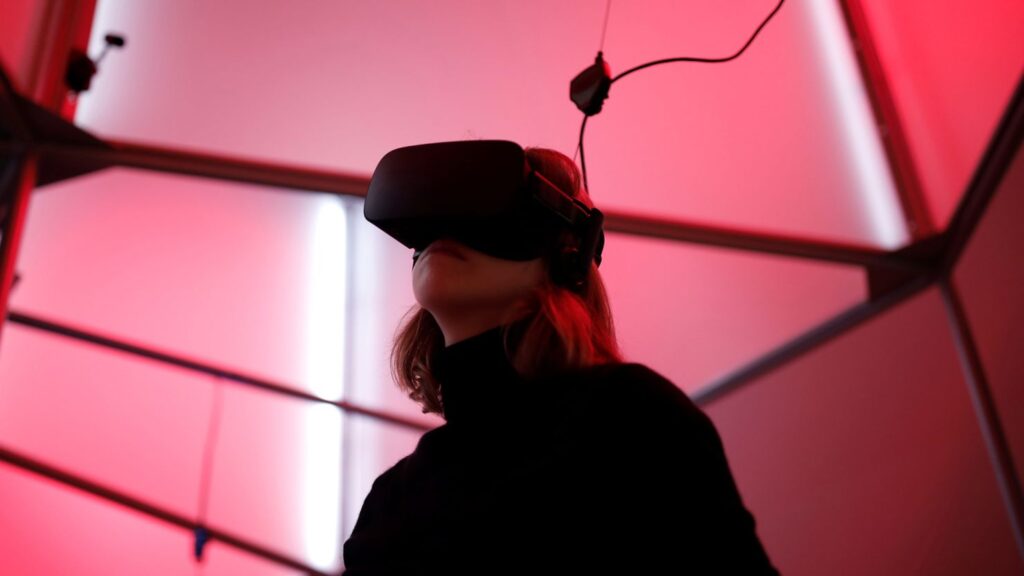
The long-awaited transformation of entertainment through virtual reality (VR) may be closer to realization than ever before. Since the launch of the Oculus Rift in 2012, expectations have soared for VR to become a mainstream medium. Now, in 2025, major tech and entertainment companies are actively collaborating to create immersive content, suggesting that the long-promised VR revolution could finally be on the horizon.
Reports from The Wall Street Journal indicate that Meta is in negotiations with major players like Disney and A24 to produce engaging content for its Quest VR headsets. Additionally, Apple has made strides with its Vision Pro headset, recently unveiling an update that allows users to share immersive content, enhancing the experience of watching movies together in 3-D. Earlier in the year, Apple introduced a virtual concert featuring Metallica and announced further performance upgrades for the Vision Pro. Such developments reflect a concerted effort by leading firms to encourage consumers to invest in VR technology for unique experiences beyond traditional screens.
Breaking the Chicken-and-Egg Cycle
Over the past decade, VR headset manufacturers have made significant advancements, producing lighter and more powerful devices. As entertainment companies begin to explore this new storytelling medium, there is a palpable shift in the industry. For instance, Meta offered virtual rinkside tickets for Stanley Cup games, following similar initiatives in basketball. Virtual concerts, like the immersive sessions featuring Alicia Keys and Blackpink, have also become popular among headset owners. Despite these initiatives, most have served as trials rather than long-term commitments.
The challenge remains a “chicken-and-egg” scenario: content creators need a substantial user base to invest in VR, while widespread adoption requires compelling content. According to Sarah Malkin, director of entertainment content at Meta’s Reality Labs, this cycle may already be changing. “I think the ‘it moment’ is when you are regularly engaging in experiences in mixed reality that are super complementary and part of your integrated life,” Malkin said in an interview with CNN.
Recent data from IDC shows that global shipments of augmented reality (AR) and VR headsets rose by approximately 10% to 7.5 million units in 2024. In the United States, shipments increased nearly 30.8% to 3.4 million units. Although IDC anticipates a decline in shipments this year due to delayed product launches, the firm projects a remarkable rebound in 2026, with worldwide shipments expected to surge by 98.5% to 11.3 million.
Content Creation and Market Dynamics
Despite the potential for VR, the results have not consistently met expectations. Mark Zuckerberg’s ambitious Metaverse project has cost Meta around $46 billion over three years, with Reality Labs reporting a $4.2 billion operating loss and only $412 million in sales in the first quarter of 2025, a decrease from the previous quarter. Nevertheless, tech giants remain committed to experimenting with VR technology. Meta has invested $3.5 billion in eyewear manufacturer EssilorLuxottica to enhance its augmented reality offerings.
Additionally, Snap has plans to launch new augmented reality spectacles next year, while Google continues to collaborate with partners like Xreal and Samsung on new headsets running its Android XR software. Samsung’s forthcoming Project Moohan headset is set to be among the first to launch with this technology.
As the hardware improves and content availability expands, experts like Bertrand Nepveu, a former Vision Pro contributor, emphasize the importance of wider adoption. “It’s still early, but there’s no technical limitation right now; it’s more that we need people to invest because you need a critical mass,” Nepveu stated.
The entertainment landscape is shifting, with notable figures like James Cameron and Sabrina Carpenter beginning to explore VR’s potential. Yet, immersive storytelling has yet to achieve widespread acceptance. Industry consultant Jenna Seiden pointed out that studios often misjudge content requirements for VR. “You can’t just take the flat version of what you put on Disney+ or Netflix and just throw that up,” she explained. “You need to build natively so the audience is going to have a different experience per platform.”
Exclusive content has proven to be a successful strategy for platforms like HBO Max and Apple TV+, according to Seiden. She believes this model can translate to VR, offering new avenues for audience growth. Live virtual sports, which can easily adapt to immersive platforms using advanced camera technology, are seen as an effective way to draw in larger audiences.
For the entertainment industry, the emergence of a new distribution platform comes at a crucial time. The current media landscape, characterized by the rise of streaming services and a decline in traditional cable, has left companies searching for new revenue streams. Jack Davis, co-founder of CryptTV, noted that headsets could create a vital pipeline for premium content, addressing the industry’s need for innovative formats.
Despite the excitement around VR, investment has lagged in favor of other technologies such as self-driving cars and artificial intelligence. Funding data from Crunchbase indicates that investments in AI and self-driving technologies grew from $39.96 billion in 2019 to $105.36 billion by 2025. In contrast, XR funding peaked at $4.087 billion in 2021 but fell to $347.69 million by 2025.
The venture capital scene reflects this trend, with global VR deals peaking at $6.43 billion in 2019, significantly lower than the $57.084 billion invested in AI that year. By 2025, VR-related deals had declined to $3.61 billion while AI funding soared to $130.89 billion. Nevertheless, Nepveu remains optimistic, suggesting that understanding AI’s capabilities is leading to renewed investment in XR.
Despite the hurdles, tech companies must persuade consumers to embrace VR headsets as worthwhile investments. Apple has positioned the Vision Pro as a spatial computing device, emphasizing productivity alongside entertainment capabilities. Yet, experts remain divided on when VR will reach its breakthrough moment. Predictions vary widely, with some suggesting it could happen within one to two years, while others estimate a timeframe of three to seven years.
As the industry continues to evolve, the way content is consumed may shift dramatically. Raphaël believes that traditional 2-D content could soon feel outdated. “Content, the way it is consumed today, is going to be much like we think of black and white movies,” he said. “If a film isn’t immersive, it doesn’t lose its value, but it becomes something of another era.” The future of entertainment may hinge on how effectively the industry can harness the full potential of virtual reality.






